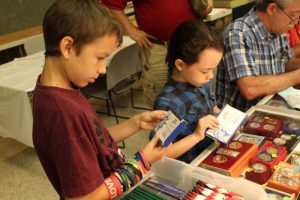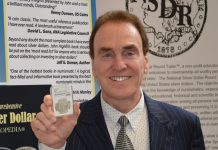
By Donn Pearlman
During this “new normal” year, when hunting through row after row of dealers’ inventory boxes may only be a memory, what will be the long-term effects on collectors searching for affordable, potentially profitable coins?
The market for U.S. coins has remained quite active despite pandemic problems. Unable to attend coin shows and club meetings or visit a local dealer’s store because of cancelations and closings, many hobbyists turned to online and mail-order sales and auctions to add to their collections, whether it is inexpensive, circulated common date Indian Head cents or million-dollar rarities.
“Even with economic uncertainty and the lack of face-to-face transactions and in-person floor bidding, major auction firms reported selling more than $167 million of U.S. rare coins in online public auctions during the first half of 2020. Dozens of record prices were established for coins selling for five, six and even seven figures,” reported Professional Numismatists Guild President Richard Weaver.
Active Market Action
In addition to the auctions, PNG conservatively reports these firms sold at least another $150 million of U.S. coins through private transactions in the first half of the year. The coins that sold each ranged in price from $100 to tens of thousands of dollars.
For younger collectors, online-only transactions are a common experience. In the July 2020 issue of the American Numismatic Association’s magazine, The Numismatist, 18-year old William Cooper wrote about the collecting habits of Generation Z (those born in the late 1990s to early 2010s).
“…technology and the social media platforms that we use for hours every day can provide a way to view, buy and sell any number of astonishing coins with just the click of a mouse, ” Cooper wrote.
But holding a coin to a computer’s camera during a Zoom conference is not the same pride of ownership feeling as actually letting friends examine it in their hands.
Mindful About Mentoring

There’s something else missing these days: in-person mentoring. How are collectors, both newcomers and advanced, going to get the informal but important instruction from chatting one-on-one with knowledgeable dealers and expert collectors and actually holding coins at club meetings, conventions, and at one of the remaining local coin shops? Yes, there are excellent instructional videos and online educational programs available, but the in-person camaraderie is missing.
One of the outstanding numismatic mentors I had taught me how to grade Buffalo nickels so well I was later able to purchase a proof 1913 Type I that a dealer offered as only a superb circulation strike.
At the time, high-grade Type 1 Buffalos brought about $35, but I paid $50 for that coin for two reasons. First, my mentors emphasized that sometimes you only get one chance to make a great purchase, so you may have to pay more for exceptional quality. Paying more, in this case, was still affordable. Second, the lessons I learned from my Buffalo nickel mentor led me to correctly suspect the coin was actually a proof, not simply a sharp circulation strike.
The subsequent sale of the $50 coin purchase I mention generated enough profit to pay for a vacation. It was truly an affordable coin.
About the Columnist: Donn Pearlman is a former member of the American Numismatic Association Board of Governors.














